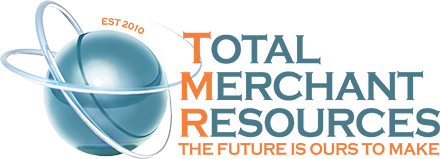
Leasing equipment can be a smart move for many businesses. It allows you to access the latest technology without a considerable upfront cost. Whether you need computers, heavy machinery, or any other equipment, leasing can help your business operate smoothly and efficiently.
First, understand why leasing might be the right choice for you. You don’t need to worry about your equipment becoming outdated quickly when you lease. You can update your equipment more frequently instead of buying and being stuck with old gear. This flexibility can be a massive advantage in fast-moving industries.
Next, consider the financial benefits. Leasing often requires lower monthly payments compared to loans for purchasing equipment. This can free up cash for other vital areas of your business. Additionally, some leases include maintenance services, saving you from unexpected repair costs. It’s a way to keep your finances predictable and stable.
There are also tax advantages to consider. Lease payments can sometimes be deducted as business expenses, which might save you money at tax time. Understanding all these benefits will help you see why leasing can be a sound financial strategy for your business.
Assessing Your Equipment Needs
Before you start leasing equipment, it is essential to assess your specific needs. Begin by identifying the type of equipment your business requires. Make a list of all the equipment needed to operate efficiently. Knowing what you need will help you make better decisions, whether office computers or heavy machinery.
Next, consider how often you will use the equipment. Determine if the need is short-term or long-term. Leasing is an excellent option if you require the equipment temporarily. On the other hand, if you need it for a longer time, you might need a different leasing plan that fits your duration needs.
Also, the size and capacity of the equipment should be considered. Ensure the equipment you choose fits your business operations without being too large or too small. This will avoid unnecessary costs and ensure you have the right tools for the job. By properly assessing your equipment needs, you set a strong foundation for the next steps in the leasing process.
Researching Leasing Options
Researching leasing options is the next critical step. Start by understanding the different types of leases available. There are operating leases and capital leases. Operating leases are typically for short-term use and do not transfer ownership. On the other hand, capital leases are closer to purchasing and often end with the option to buy.
Look for leasing companies that offer the type of equipment you need. Make a list of potential vendors and check their reputations. Read reviews and ask for recommendations from other business owners. This will help you find reliable leasing companies known for good service and fair terms.
Also, the leasing terms and conditions from different vendors should be compared. Pay attention to the lease duration, monthly payments, and additional fees. Don’t forget to check if maintenance and insurance are included in the lease. Gathering all this information will help you make an informed decision. By thoroughly researching your options, you can choose a leasing plan that best fits your business’s needs.
Evaluating Lease Agreements
After researching your options, the next step is evaluating lease agreements. Carefully read the lease terms to understand what you’re signing up for. Look for key details such as the length of the lease, monthly payments, and hidden charges. A clear understanding of these terms helps avoid surprises later.
Check the responsibilities laid out in the lease. Determine who will handle maintenance and repairs. Some leases include these services, while others might leave them to you. Knowing this can save you unexpected costs and hassles down the line.
Also, consider the end-of-lease options. Some leases offer the choice to buy the equipment at the end, while others do not. If owning the equipment eventually suits your business needs, this could be an essential factor. Evaluate if the option to upgrade equipment is available, which helps keep up with new technology.
Applying for and Securing an Equipment Lease
When you have evaluated the lease agreements and found the best option, it’s time to apply for and secure the lease. Start by gathering all necessary documents. This typically includes financial statements, tax returns, and your business plan. Having everything ready speeds up the application process.
Next, fill out the application form provided by the leasing company. Be honest and complete when providing details. Accurate information improves your chances of approval. If you have a good credit score, highlight it, which can lead to better lease terms.
Once your application is submitted, be prepared for possible questions from the leasing company. They might need further information to assess your application. Respond quickly and thoroughly to keep the process moving smoothly. Once approved, review the final lease agreement carefully before signing. Make sure it matches what you discussed and agreed upon. Sign the lease, and you’re ready to start using your leased equipment.
Conclusion
Leasing equipment is a practical and flexible solution for many businesses. By carefully assessing your needs, researching options, evaluating agreements, and thoroughly preparing your application, you can secure the right lease for your business. This approach ensures you get the equipment you need and effectively manages your finances.
Taking these steps will help your business access the necessary tools without the burden of huge upfront costs. Equipment leasing allows for smooth operations, staying current with technology, and more predictable expenses. It’s a strategic move that keeps your business agile and ready for growth.
At Total Merchant Resources, we help you navigate the equipment leasing process. If you’re ready to explore your merchant loan services, contact us today to get started and find the perfect lease for your needs!



